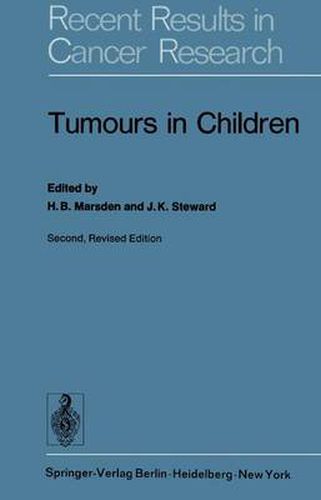Readings Newsletter
Become a Readings Member to make your shopping experience even easier.
Sign in or sign up for free!
You’re not far away from qualifying for FREE standard shipping within Australia
You’ve qualified for FREE standard shipping within Australia
The cart is loading…






This title is printed to order. This book may have been self-published. If so, we cannot guarantee the quality of the content. In the main most books will have gone through the editing process however some may not. We therefore suggest that you be aware of this before ordering this book. If in doubt check either the author or publisher’s details as we are unable to accept any returns unless they are faulty. Please contact us if you have any questions.
Cancer in childhood is a rare disease, but for many reasons attracts interest out of proportion to its frequency. There is, of course, the parental anguish associated with a catastrophic illness in a son or daughter - anguish shared in large measure by the physician. This aspect no doubt has spurred on clinicians and investigators in their race to develop more effective means of treatment. The rewards are great. Not only is there the human element, but there is also the fact that survival of the successfully treated child is measured in scores of years rather than the ordinary five to ten year survival rates cited for the adult. Associated with this aspect of paediatric oncology is the responsibility to make those many years as trouble-free as possible. The challenge to the team organizing the care of children with cancer is clear. Cure is to be obtained, but not at the cost of progressively more severe somatic or psychic lesions as the child develops through adolescence to maturity. The cured child of today must not become the chronically ill adult of tomorrow. The spectrum of malignant diseases in childhood is not so varied as that of older patients. The kinds of tumour seen in children are relatively few in number; therefore, concentrated attention can be focussed on each entity, and specific strategies developed for clinical management.
$9.00 standard shipping within Australia
FREE standard shipping within Australia for orders over $100.00
Express & International shipping calculated at checkout
This title is printed to order. This book may have been self-published. If so, we cannot guarantee the quality of the content. In the main most books will have gone through the editing process however some may not. We therefore suggest that you be aware of this before ordering this book. If in doubt check either the author or publisher’s details as we are unable to accept any returns unless they are faulty. Please contact us if you have any questions.
Cancer in childhood is a rare disease, but for many reasons attracts interest out of proportion to its frequency. There is, of course, the parental anguish associated with a catastrophic illness in a son or daughter - anguish shared in large measure by the physician. This aspect no doubt has spurred on clinicians and investigators in their race to develop more effective means of treatment. The rewards are great. Not only is there the human element, but there is also the fact that survival of the successfully treated child is measured in scores of years rather than the ordinary five to ten year survival rates cited for the adult. Associated with this aspect of paediatric oncology is the responsibility to make those many years as trouble-free as possible. The challenge to the team organizing the care of children with cancer is clear. Cure is to be obtained, but not at the cost of progressively more severe somatic or psychic lesions as the child develops through adolescence to maturity. The cured child of today must not become the chronically ill adult of tomorrow. The spectrum of malignant diseases in childhood is not so varied as that of older patients. The kinds of tumour seen in children are relatively few in number; therefore, concentrated attention can be focussed on each entity, and specific strategies developed for clinical management.